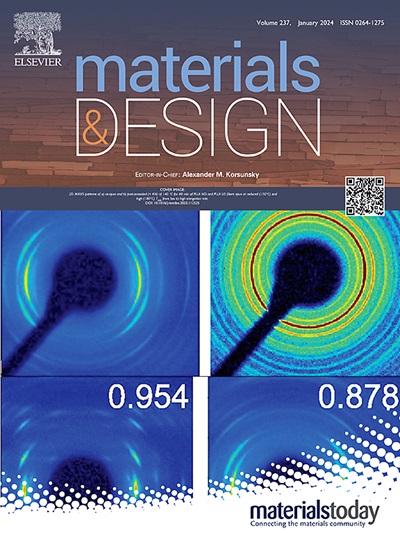Local plastic deformation in the vicinity of topologically close-packed phases in a Ni-based single crystal superalloy
IF 7.6
2区 材料科学
Q1 MATERIALS SCIENCE, MULTIDISCIPLINARY
引用次数: 0
Abstract
The role of a topologically close-packed (TCP) phase (μ phase) on the plastic deformation of a Ni-based superalloy was investigated employing a combination of in situ scanning electron microscope micropillar compression and atomic-scale characterization using atom probe tomography and transmission electron microscopy. Micropillar tests revealed two distinct slip behaviors: TCP-free pillars deformed via multiple slip systems, whereas TCP-containing pillars deformed by single slip. Notably, while previous studies have reported fracture at the TCP/γ' interface, our findings revealed that in the TCP-containing pillars, deformation was rarely observed at the interface. Instead, slip predominantly occurred in regions approximately 50–100 nm away from the interface. Chemical analysis near the TCP/γ' interface via APT showed an excess Ta content near the interface increasing the antiphase boundary energy and enhancing local order strengthening. Moreover, an approximate 8% lattice misfit at the TCP/γ' interface, coupled with the elastic mismatch between the two phases, provided additional slip resistance in the vicinity of the interface. This study sheds light on the intricate interplay between TCP phase formation, microstructural evolution, and mechanical properties in Ni-based superalloys offering valuable insights into the role of the TCP phases.

求助全文
约1分钟内获得全文
求助全文
来源期刊

Materials & Design
Engineering-Mechanical Engineering
CiteScore
14.30
自引率
7.10%
发文量
1028
审稿时长
85 days
期刊介绍:
Materials and Design is a multi-disciplinary journal that publishes original research reports, review articles, and express communications. The journal focuses on studying the structure and properties of inorganic and organic materials, advancements in synthesis, processing, characterization, and testing, the design of materials and engineering systems, and their applications in technology. It aims to bring together various aspects of materials science, engineering, physics, and chemistry.
The journal explores themes ranging from materials to design and aims to reveal the connections between natural and artificial materials, as well as experiment and modeling. Manuscripts submitted to Materials and Design should contain elements of discovery and surprise, as they often contribute new insights into the architecture and function of matter.
 求助内容:
求助内容: 应助结果提醒方式:
应助结果提醒方式:


